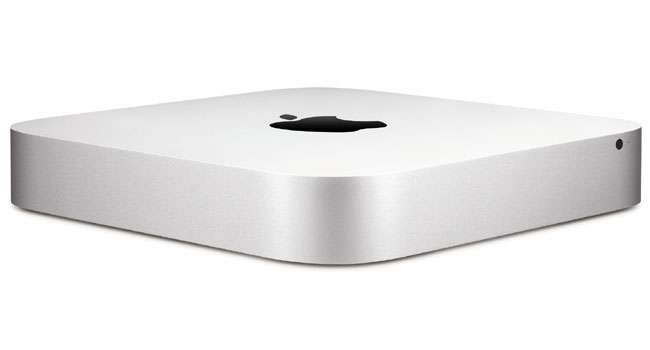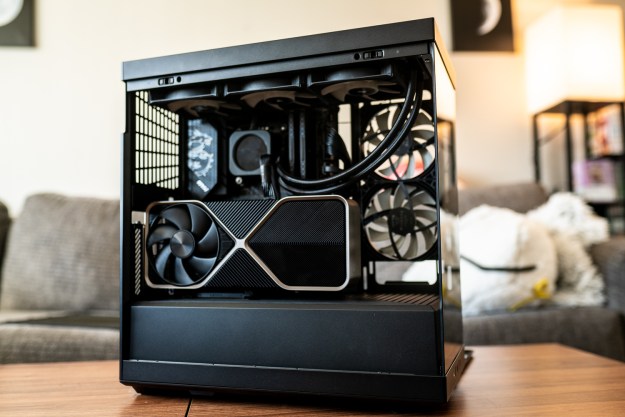
In addition to launching Mac OS X 10.7 “Lion” and rolling out new MacBook Airs today, Apple also released an update to its entry-level desktop system, the Mac mini. Initially launched as a bare-bones system aimed at “switchers”—folks converting to Macs from Windows—the Mac mini has turned into a compact mainstream system for folks looking for the performance of mainstream iMacs, but without having to pay for a built-in display. Apple’s latest Mac minis continue in that tradition, adding second-generation Intel Core i5 and i7 processors, AMD Radeon HD 6630M graphics, and Apple’s latest high-bandwidth Thunderbolt technology. However, the compact Mac minis also lose their integrated optical drives—if folks want to play CDs or DVDs, they’ll need to connect to another Mac or attach a separate drive, like Apple’s $79 MacBook Air SuperDrive.
“Mac mini delivers the speed and expandability that makes it perfect for the desktop, living room, or office,” said Apple’s senior VP for worldwide product marketing Philip Schiller, in a statement. “With faster processors, more powerful graphics, and Thunderbolt in an incredibly compact, aluminum design, the new Mac mini is more versatile than ever.”
The new Mac minis will be available in three basic configurations. Two consumer models will be based on 2.3 or 2.5 GHz second-generation Intel Sandy Bridge processors, shipping with 2 or 4 GB of RAM, respectively. (Both can be cranked to 8 GB.) The entry-level model is powered by built-in Intel HD Graphics 3000 with 288 MB of video memory calved off from main system memory, while the 2.5 GHz model sports AMD Radeon HD 6630M graphics with 256 MB of GDD5 memory. Both offer 5400rpm 500GB hard drives, although the 2.5 GHz model can be configured with a 256 GB SSD, or a mixed 256 GB SSD and 750 GB 7200 rpm hard drive.
The Mac mini server sports a 2 GHZ quad-core second-generation Intel Core i7 processor, 4 GB of RAM (again, crankable to 8 GB), and Intel HD Graphics 3000; it’s configured with dual 7200rpm 500 GB hard drives.

Otherwise, the specs are pretty similar: a Thunderbolt port for displays and other high-speed peripherals, HDMI and DVI output (with support for dual displays and mirroring), 802.11b/g/n Wi-Fi and Bluetooth wireless networking, gigabit Ethernet, FireWire 800, four USB 2.0 ports (no USB 3.0 in sight), and an SDXC card slot for removable media. The systems also feature audio in/out and a headphone jack.
Pricing for the new Mac minis starts at $599 for the low end model, and $799 for the system with discrete graphics. The Mac mini server starts at $999. All the systems ship with Mac OS X 10.7 Lion—so if you use PowerPC apps or tools via Rosetta, beware. The Mac minis can be ordered online today, and will be available in Apple retail locations tomorrow.
One of the more interesting new features of the new Mac minis is, that without an optical drive—and Lion not being available on physical media—there might seem to be no way to recover the system—unless users are smart and keep bootable backups. Not quite true: Apple has integrated Lion Recovery tools that enable users to repair disks and re-install Lion without a physical disk by connecting to Apple via the Internet. Of course, that would require a working Internet connection…
Editors' Recommendations
- I’m a die-hard Windows fan, but the M1 Mac Mini converted me
- Apple’s newest Mac Mini gets a $200 price cut, the first deal we’ve seen


